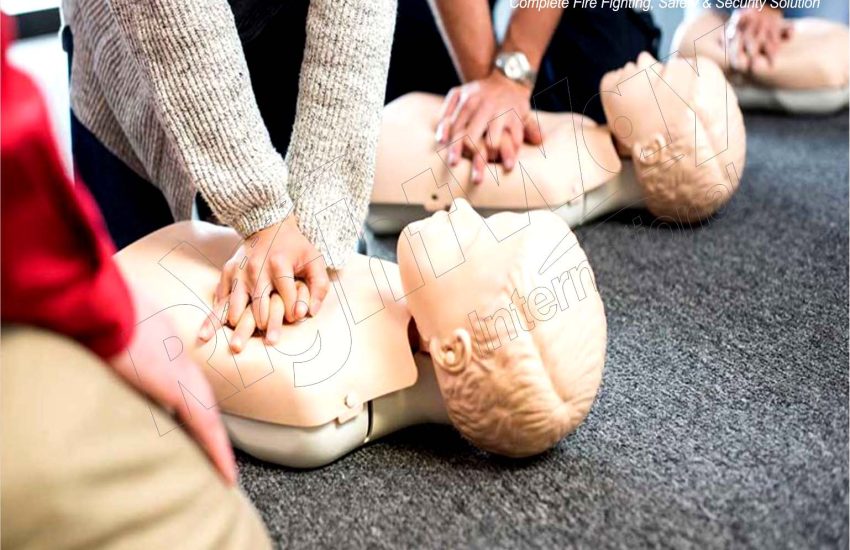First Aid and CPR Trainings (Cardiopulmonary Resuscitation) training are vital life-saving skills that everyone should learn. Whether you’re at home, at work, or in a public place, knowing how to respond in an emergency can make all the difference. In this article, we will cover the importance of first aid and CPR training, what they entail, and why you should consider taking a course to equip yourself with these life-saving skills.
What is First Aid and CPR Trainings?
First Aid refers to the initial care provided to a person suffering from a sudden illness or injury. It involves simple techniques such as bandaging wounds, applying pressure to stop bleeding, and managing injuries like sprains, fractures, or burns, until professional medical help arrives.
CPR (Cardiopulmonary Resuscitation) is an emergency procedure used when someone’s heartbeat or breathing has stopped. By performing chest compressions and rescue breaths, CPR can help restore oxygen flow to vital organs, particularly the brain, and can significantly increase the chances of survival in situations like cardiac arrest.
Why is First Aid and CPR Trainings Important?
- Life-Saving Knowledge: Accidents and medical emergencies can happen at any time. Whether it’s a sudden cardiac arrest, a choking incident, or a severe cut, knowing how to respond quickly and effectively can save lives.
- Confidence in Emergencies: First aid and CPR training give individuals the confidence to act when faced with an emergency. The knowledge that you can provide assistance until medical professionals arrive makes you a more valuable bystander and potentially a life saver.
- Better Workplace Safety: Many workplaces encourage or even require first aid and CPR certification. Having trained employees on-site can help prevent accidents from becoming life-threatening and create a safer environment overall.
- Community Impact: In communities, individuals trained in first aid and CPR are better equipped to assist their neighbors during emergencies. These skills can help stabilize someone in need until emergency responders arrive.
- Improved Emergency Response: Time is critical in medical emergencies. Every second counts, and trained individuals are better able to take immediate action, improving the victim’s chances of survival.
What Does First Aid and CPR Training Include?
First aid and CPR courses vary depending on the provider, but typically, they cover the following:
- CPR for Adults, Children, and Infants: Learn how to perform chest compressions, mouth-to-mouth resuscitation, and how to use an Automated External Defibrillator (AED).
- Choking Management: Techniques for helping someone who is choking, including the Heimlich maneuver and back blows.
- Basic Wound Care: How to clean and dress wounds, manage cuts, and apply bandages to prevent infection.
- Burn Care: Techniques for cooling and dressing burns to reduce pain and prevent further injury.
- Fractures and Sprains: How to stabilize broken bones or sprains and prevent further harm until medical professionals arrive.
- Managing Medical Emergencies: Recognizing signs of serious medical conditions like strokes, heart attacks, diabetic emergencies, and allergic reactions, and knowing how to respond appropriately.
- CPR for Cardiac Arrest: In-depth training on performing CPR in emergency cardiac arrest situations, including the use of AEDs.
How to Get Certified in First Aid and CPR?
To get certified in first aid and CPR, you can enroll in a course offered by certified organizations like:
- American Heart Association (AHA)
- American Red Cross
- St. John Ambulance
- National Safety Council (NSC)
These organizations offer various levels of training, from basic courses to advanced first aid and CPR for healthcare providers. Certification typically lasts for two years, after which a re-certification or refresher course is required to ensure skills are up-to-date.
Choosing the Right First Aid and CPR Course
When selecting a course, consider the following factors:
- Course Level: Choose a course that matches your needs. For basic knowledge, a standard first aid and CPR course might suffice. For healthcare professionals, advanced courses like ACLS (Advanced Cardiovascular Life Support) may be necessary.
- Instructor Qualifications: Ensure that the course is taught by a qualified instructor, certified by a reputable organization like the American Heart Association or the Red Cross.
- Hands-on Practice: Look for a course that offers practical experience, where you can practice CPR techniques, wound care, and other first aid procedures on manikins or simulated situations.
- Recertification: Remember that first aid and CPR certifications are time-sensitive and need to be renewed periodically. Choose a provider that offers recertification courses to help you stay compliant and up-to-date.
Conclusion
First Aid and CPR Trainings are invaluable skills that can help save lives in emergencies. Whether you’re looking to improve your ability to help in an emergency or make your workplace safer, taking a certified course is a wise decision. Equip yourself with the knowledge to respond quickly and confidently in a crisis, and you could be the difference between life and death for someone in need.
Take the first step toward becoming a life-saving hero—enroll in a first aid and CPR course today!


